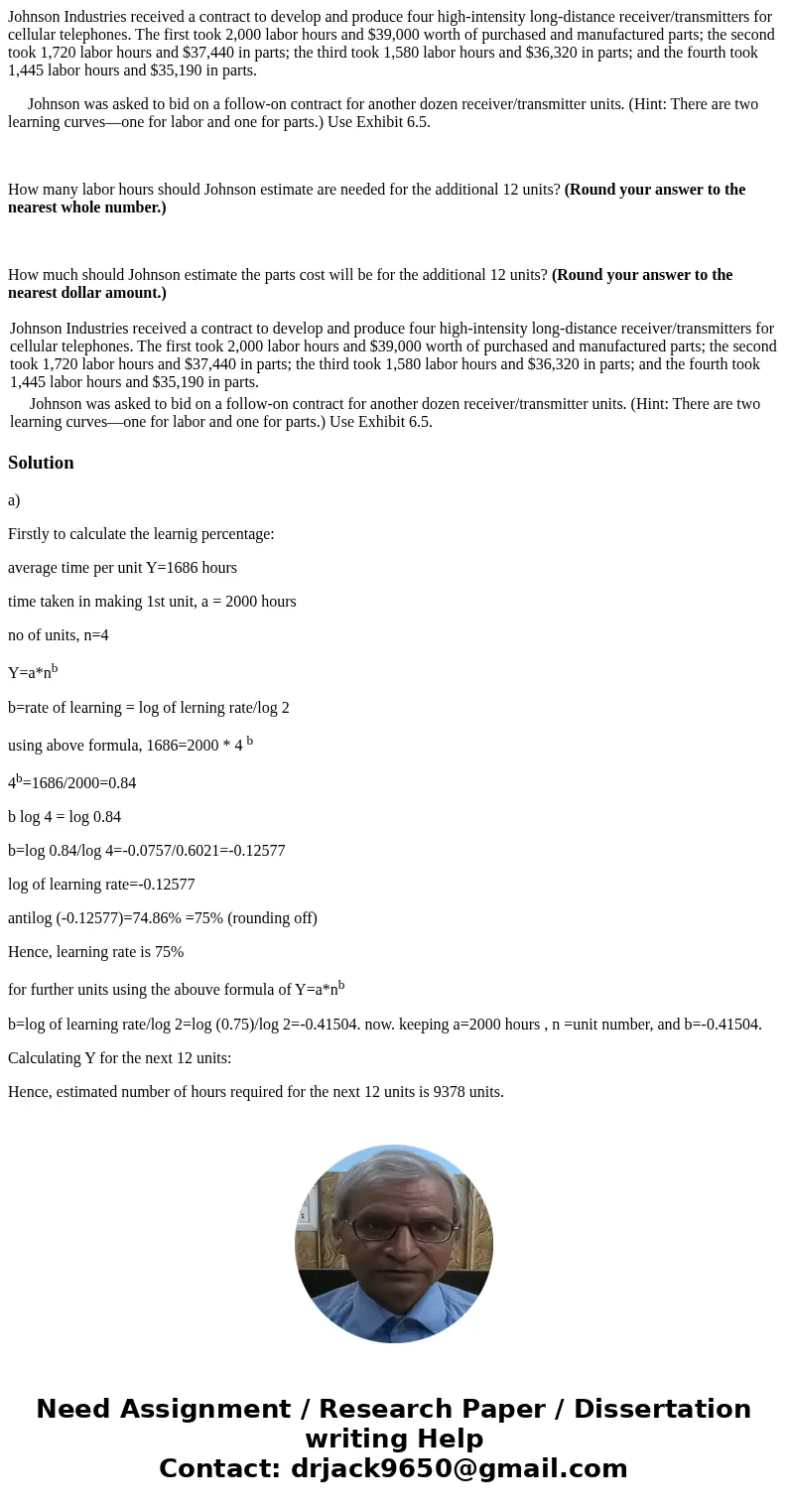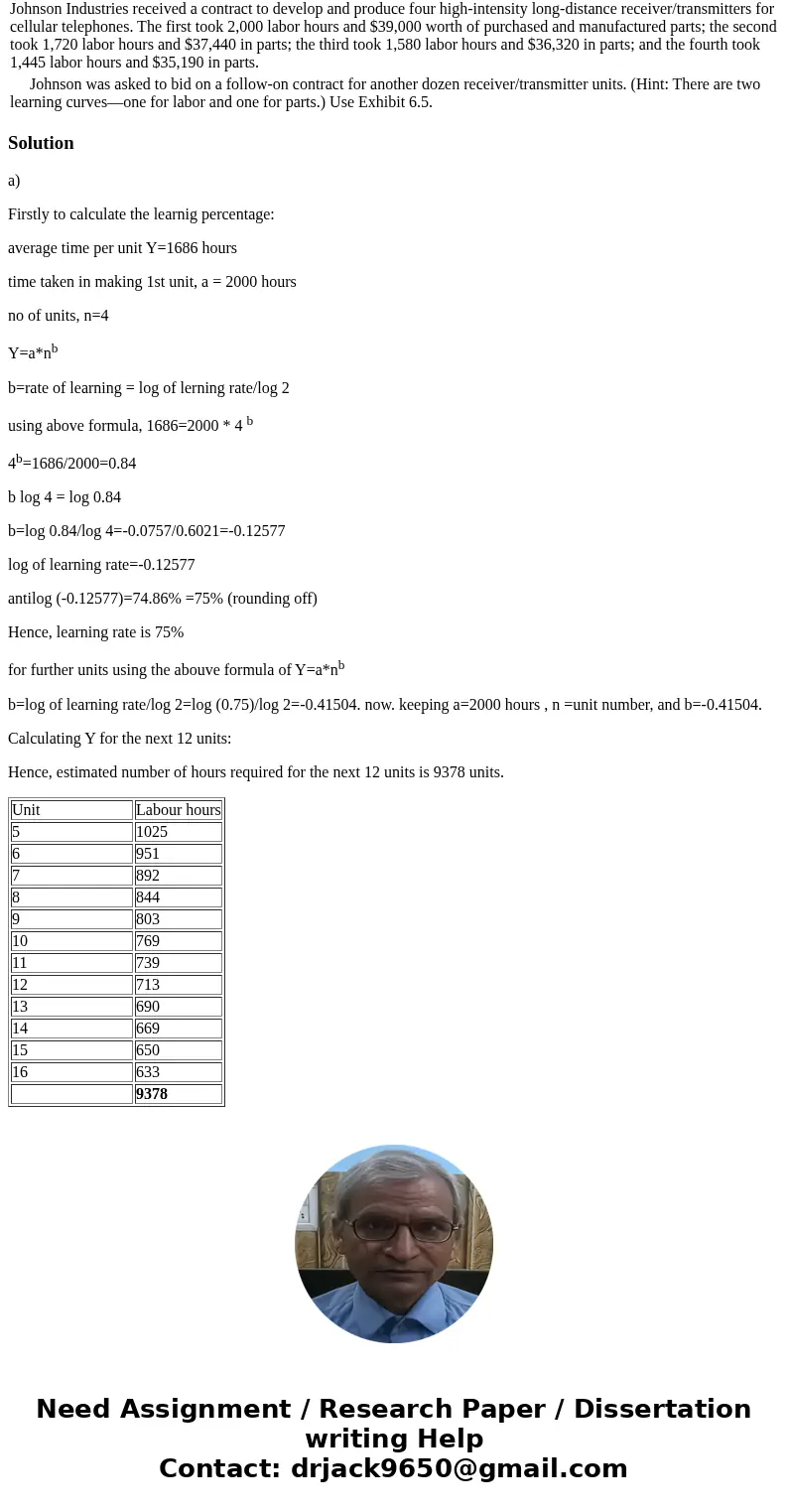Johnson Industries received a contract to develop and produc
Johnson Industries received a contract to develop and produce four high-intensity long-distance receiver/transmitters for cellular telephones. The first took 2,000 labor hours and $39,000 worth of purchased and manufactured parts; the second took 1,720 labor hours and $37,440 in parts; the third took 1,580 labor hours and $36,320 in parts; and the fourth took 1,445 labor hours and $35,190 in parts.
Johnson was asked to bid on a follow-on contract for another dozen receiver/transmitter units. (Hint: There are two learning curves—one for labor and one for parts.) Use Exhibit 6.5.
How many labor hours should Johnson estimate are needed for the additional 12 units? (Round your answer to the nearest whole number.)
How much should Johnson estimate the parts cost will be for the additional 12 units? (Round your answer to the nearest dollar amount.)
| Johnson Industries received a contract to develop and produce four high-intensity long-distance receiver/transmitters for cellular telephones. The first took 2,000 labor hours and $39,000 worth of purchased and manufactured parts; the second took 1,720 labor hours and $37,440 in parts; the third took 1,580 labor hours and $36,320 in parts; and the fourth took 1,445 labor hours and $35,190 in parts. |
| Johnson was asked to bid on a follow-on contract for another dozen receiver/transmitter units. (Hint: There are two learning curves—one for labor and one for parts.) Use Exhibit 6.5. |
Solution
a)
Firstly to calculate the learnig percentage:
average time per unit Y=1686 hours
time taken in making 1st unit, a = 2000 hours
no of units, n=4
Y=a*nb
b=rate of learning = log of lerning rate/log 2
using above formula, 1686=2000 * 4 b
4b=1686/2000=0.84
b log 4 = log 0.84
b=log 0.84/log 4=-0.0757/0.6021=-0.12577
log of learning rate=-0.12577
antilog (-0.12577)=74.86% =75% (rounding off)
Hence, learning rate is 75%
for further units using the abouve formula of Y=a*nb
b=log of learning rate/log 2=log (0.75)/log 2=-0.41504. now. keeping a=2000 hours , n =unit number, and b=-0.41504.
Calculating Y for the next 12 units:
Hence, estimated number of hours required for the next 12 units is 9378 units.
| Unit | Labour hours |
| 5 | 1025 |
| 6 | 951 |
| 7 | 892 |
| 8 | 844 |
| 9 | 803 |
| 10 | 769 |
| 11 | 739 |
| 12 | 713 |
| 13 | 690 |
| 14 | 669 |
| 15 | 650 |
| 16 | 633 |
| 9378 |


 Homework Sourse
Homework Sourse